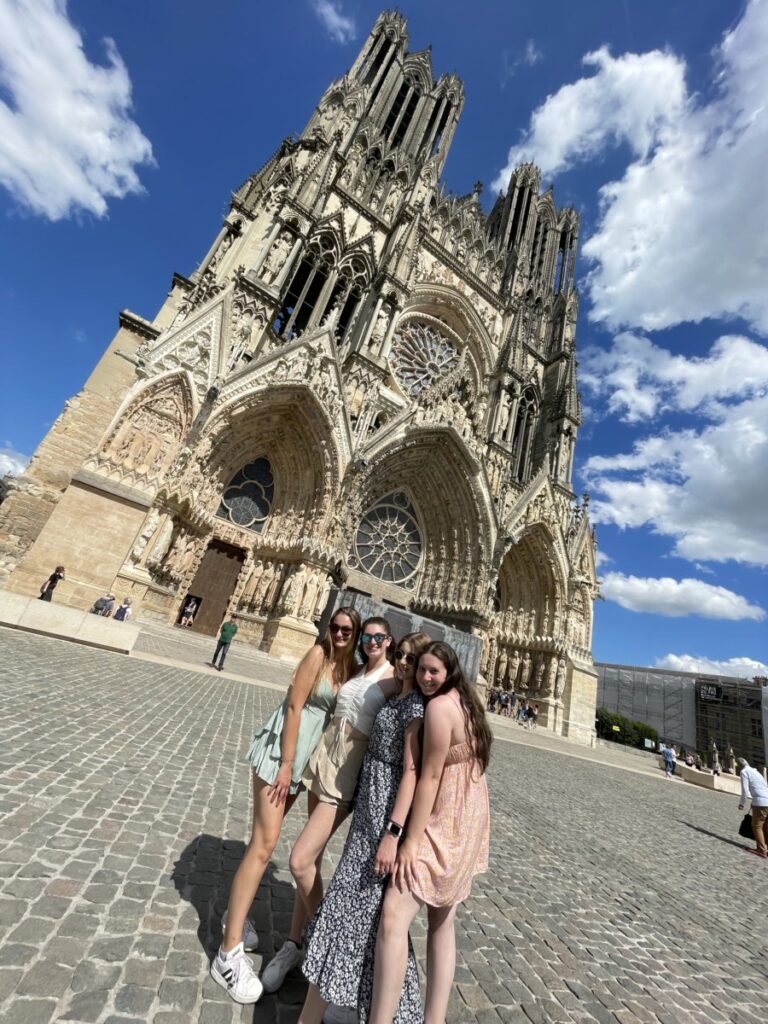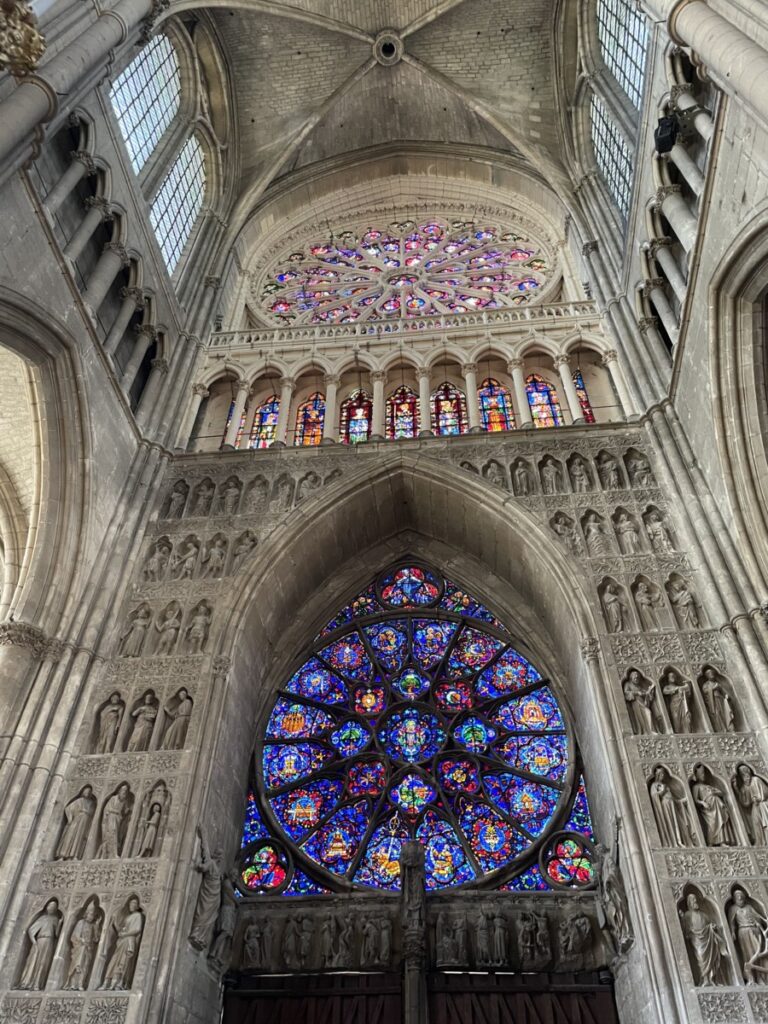On June 11th, 2022, Sam, Rachel, Cynthia, and I visited Reims, France with Aman, one of my friends from Emory. During our visit, we saw the Notre-Dame Cathedral of Reims, which translates to “Our Lady of Reims.” This beautiful Roman Catholic cathedral, dedicated to the Virgin Mary, was the traditional location for the coronation of the kings of France. The cathedral was founded in the 5th century and has gone through numerous restorations throughout the past few centuries, including after being damaged in the French Revolution and in World War I, when it was struck by more than three hundred artillery shells. I was not only awed by beautiful building but also the deep-rooted history of Christianity in France. Christianity is as much embedded France’s history as it is ingrained in the culture and everyday lives of French citizens. For example, I found it interesting to learn that the grocery store near our apartment does not sell alcohol on Sundays.

While visiting the cathedral, I reflected on the articles we discussed in NBB 402W about COVID-19, which sparked my interest in learning about the connection between religion and the pandemic since religious services quickly became hotspots for the virus. I wondered whether the illness made people feel more connected to their religious practices, so I did some research regarding the pandemic and religion. One Polish study found that most citizens surveyed declared faith/spiritually was important to them, but their faith did not strengthen in the face of the pandemic. They found that a higher percentage of Catholic respondents believed in the protective power of faith compared to other denominations and more Catholic respondents also declared that faith had a crucial role in their life (Kowalczyk et al., 2020). Despite this study showing that the pandemic did not increase spiritual belief, religion is obviously an important part of the European lifestyle. Studies have shown neurobiological changes correlated with religion and spirituality specifically in medial frontal cortex, orbitofrontal cortex, precuneus, posterior cingulate cortex, default mode network, and caudate (Rim et al., 2019), which could explain the importance of religion in people’s lives.

Although the outcomes of the pandemic study were not what I was expecting, I found it interesting to learn more about Christianity and Catholicism in Europe, as well as the brain changes association with religion. Overall, this visit allowed me to feel more connected to my late grandparents on my dad’s side, who were raised Catholic.
Citations:
Kowalczyk O, Roszkowski K, Montane X, Pawliszak W, Tylkowski B, Bajek A. Religion and Faith Perception in a Pandemic of COVID-19. J Relig Health. 2020;59(6):2671-2677. doi:10.1007/s10943-020-01088-3
Rim, J. I., Ojeda, J. C., Svob, C., Kayser, J., Drews, E., Kim, Y., Tenke, C. E., Skipper, J., & Weissman, M. M. (2019). Current Understanding of Religion, Spirituality, and Their Neurobiological Correlates. Harvard review of psychiatry, 27(5), 303–316. https://doi.org/10.1097/HRP.0000000000000232

Really cool! Beautiful pictures, hadn’t really thought about the relationship between religion and covid before.